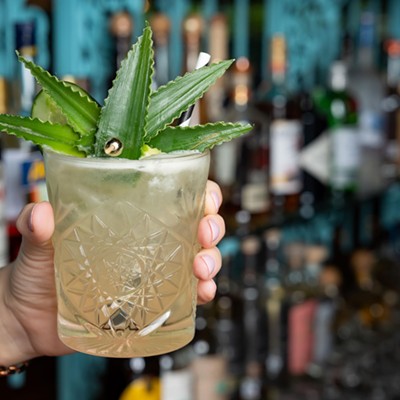I'll never forget watching the Heisman Trophy announcement the year Robert Griffin III (RGIII) won. While my Baylor friends and I watched our quarterback on TV, hoping he would be awarded with the trophy, we were enjoying a spread of snacks, including two types of cookies. One was the peanut butter cookies I had baked, and the other was a bag of gluten-free cookies brought by someone who was not gluten-intolerant. In fact, no one at the watch party was allergic to gluten or diagnosed with celiac disease.
"I can eat as many of these gluten-free cookies as I want because they are healthier than the peanut butter cookies," one person said.
Wait, what?
I hear this logic (or lack thereof) all the time. When people see something labeled "gluten-free," they automatically assume it is lower in calories, carbohydrates, fat and sugar. Because, to them, gluten-free means free of everything deemed "bad" for your health or diet.
How many times have you heard someone say, "Oh, it's okay; it's gluten-free. It can't be that bad for you," when the person offering the food doesn't even have celiac disease? The assumption and justification are just downright illogical and, quite frankly, annoying.
First things first. What exactly does "gluten-free" mean? When food is deemed gluten-free, it means that it doesn't have the protein known as gluten. Wheat, barley, rye and triticale grains contain gluten. For those who cannot tolerate this protein, digesting products made with wheat, barley, rye or triticale grains causes them to suffer from digestive issues. For those with celiac disease, the symptoms and side effects are a lot worse; they cannot digest the gluten, which causes damage to the small intestine, which in turn causes their body to not absorb nutrients, leading to malnutrition.
Gluten is in a lot of foods, including, but not limited to, bread, cookies, crackers, cakes, cereal, beer, pasta, lunch meats and chips. While this is but a few of the off-limit products for those suffering from celiac disease or those who are gluten-intolerant, all of these foods are eaten on a daily basis. But, thanks to modern technology and sophisticated research, our grocery stores are filled with gluten-free alternatives -- and many restaurants offer separate gluten-free menus or substitutions for individual items.
Taking out all of the gluten means it has to be replaced with something. You can't bake cupcakes or a loaf of bread without something to replace the flour. Whatever you are making wouldn't form or hold its shape. So, there are a variety of alternative wheat products used to make these foods -- bulgur, semolina, spelt, graham, soy, corn, buckwheat, quinoa, rice, etc. And guess what? These products have calories.
Sugar does not have gluten. Fat does not have gluten. And the gluten-free products have sugar and fat. This story continues on the next page.





